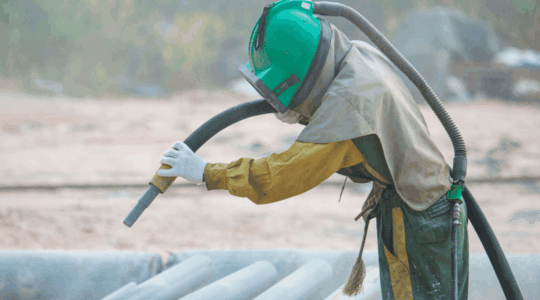Workplace Safety
Safety Practices to Keep Your Employees Protected
June 8, 2023
Preventable injury-related deaths are the fourth leading cause of death in the United States, according to the National Safety Council (NSC). In 2021, there were 4,472 deaths from preventable injuries, an 11% increase from the prior year.
That's why every June, National Safety Month highlights efforts that can prevent injuries and death inside and outside the workplace, helps provide learning opportunities for employees, allows employers to share their safety pride and gives employees the opportunity to pledge they will work safely.
Implement these four safety practices and procedures to keep your employees safe in the workplace.
Emergency Preparedness
Disasters such as hurricanes, tornadoes, floods and earthquakes can strike with little or no warning. Because it’s almost impossible to know when disaster will strike, it’s important to make an emergency plan for a variety of disasters. Your plan should cover how you’ll receive emergency alerts, where employees should go for shelter in case of an evacuation order and how they can contact loved ones.
You should also have a fully stocked emergency supply kit that’s stored in a portable bag or tote so it’s ready to go if you need to evacuate. The basic kit should include:
- Water
- Food and manual can opener
- Battery-powered or hand-crank radio and an NOAA Weather Radio
- First-aid kit
- Flashlight
- Extra batteries
- Whistle
- Moist towelettes, garbage bags and plastic ties for personal sanitation
- Cellphone with chargers and a backup battery
To limit the effects that disasters have, review the common disasters in your area. You should also review your insurance coverage to make sure you are protected financially.
Above all, communicate your plan with employees and other necessary parties.
Related Reading: Hurricane Insurance Coverage Considerations for Commercial Property Owners
Slips, Trips and Falls
Wet floors, spills and excess clutter can mean disaster for employees, causing many every year to suffer lost pay and serious pain. Injuries caused by slips, trips and falls range from sprained or strained muscles and joints to broken bones and head injury.
There are several precautions you should take to ensure your safety and the safety of your employees.
Floors
- Keep floors clean and dry at all times. Wet floors present a slip hazard and can promote the growth of infection-causing microbes like mold, fungi and bacteria.
- Remove all objects and clutter from aisles, exits and passageways.
- In the event of grease or oil spills on the kitchen floor, clean the mess immediately and alert your co-workers of the problem.
- Use floor or ceiling electrical plugs for power to avoid running a cord down a long hallway.
- Display warning signs to alert others of a wet floor.
- Use floor mats while surfaces are drying after cleaning to provide traction.
- In areas prone to slipping (toilets and shower areas), use a no-skid wax product to clean.
- While washing the floor, wear protective footgear to prevent falling.
- Keep an eye out for uneven floors, and fix them or notify someone who can immediately.
Other Recommendations
- Use strong ladders to reach as opposed to standing on small stools or boxes.
- Stretch out bulging carpets to prevent trips and falls.
- Use handrails while walking down stairs to prevent slipping when walking too fast.
- Repair broken light fixtures and replace bulbs for adequate visibility.
Related Reading: 9 Ways to Improve Construction Site Safety
Always Stay Alert
Adopt a see it, sort it mentality. If you notice any situation that you think could present a slipping, tripping or falling hazard for you or a co-worker, act immediately to remedy it or notify your supervisor.
Related Reading: Slips, Trips and Fall Prevention Tips
Heat-Related Illness
Summer heat can be more than uncomfortable; it can be a threat to your employees health. Heat and humidity can cause several different types of heat-related illnesses such as heat cramps, heat exhaustion and heat stroke. Employers should establish guidance regarding heat illness prevention, including procedures and information to ensure employees are knowledgeable in prevention and recognition of heat stress to ensure employee safety.
Some basic provisions to prevent heat-related illness include provision of water, access to shade and high-heat procedures to be implemented when the temperature exceeds 95 degrees Fahrenheit.
High-Heat Procedures
- Ensure that effective communication by voice, observation or electronic means is maintained so that employees at the work site can contact a supervisor when necessary. An electronic device, such as a cell phone or text messaging device, may be used for this purpose only if reception in the area is reliable.
- Observe employees for alertness and signs or symptoms of heat illness. Employers should ensure effective employee observation or monitoring by implementing one or more of the following:
- Supervisor or designee observation of 20 or fewer employees;
- Mandatory buddy system;
- Regular communication with sole employees (such as radio or phone);
- Other effective means of observation.
- Designate one or more employees on each worksite to call for emergency medical services, and allow other employees to call for emergency services when no designated employee is available.
- Remind employees throughout the work shift to drink plenty of water.
- Pre-shift meetings before the start of work must review high-heat procedures, encourage employees to drink plenty of water and remind them of their right to take a cool-down rest when necessary.
Companies should also implement emergency response procedures, including responding to signs and symptoms of heat illness, contacting emergency medical services and, if necessary, transporting employees to a place where they can be reached by emergency services, and ensuring clear directions are given to work site.
Hazard Recognition
Educating employees on everyday hazards can help workers identify and avoid them before an injury occurs. According to the National Safety Council, a leading cause of death occurs from being struck by or against an object, caught in an object or equipment, coming into contact with an object and caught in collapsing materials.
Safety inspections should be completed daily to identify any hazards before employees start working to minimize potential risks and limit injuries.
Implementing the proper safety procedures can alter unsafe workplace behavior and create a safer work environment. For more risk management guidance, contact us today.
The above information does not constitute advice. Always contact your insurance broker or trusted advisor for insurance-related questions.


